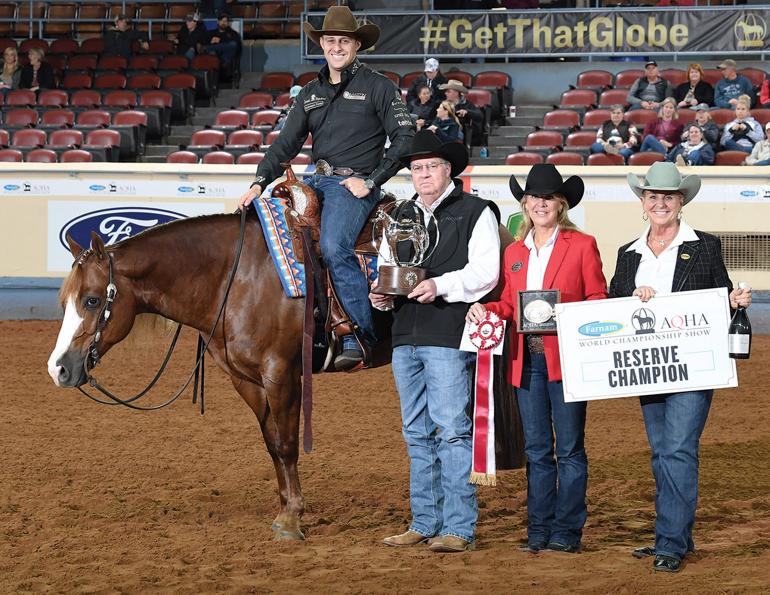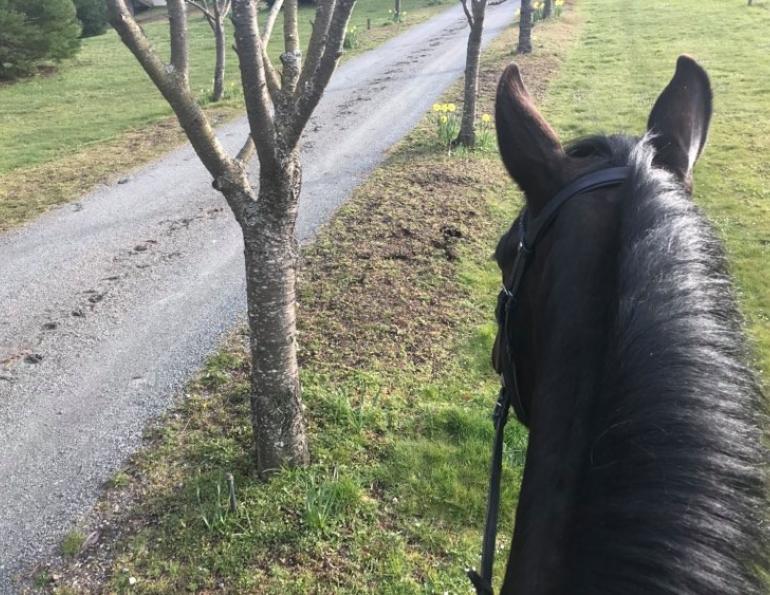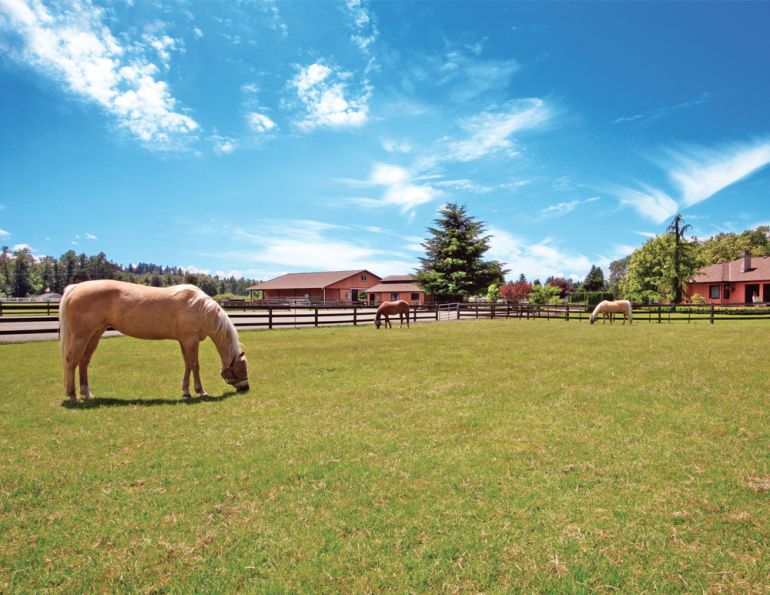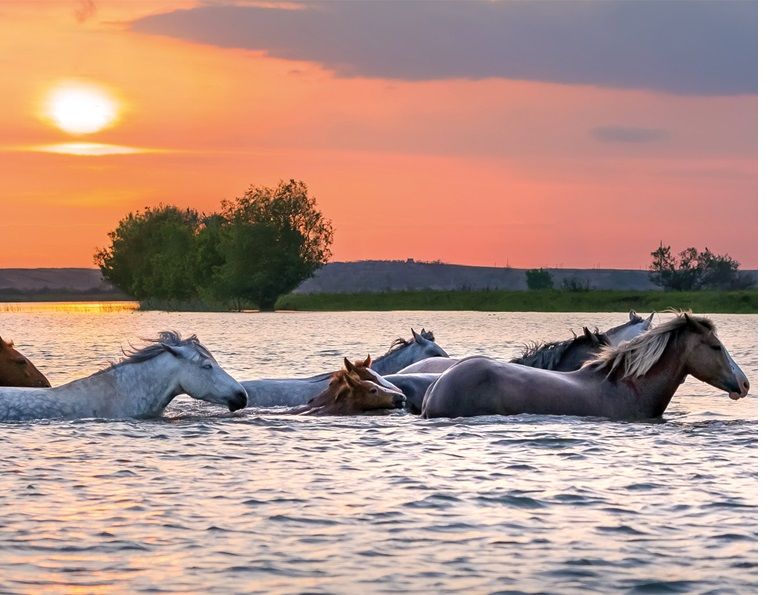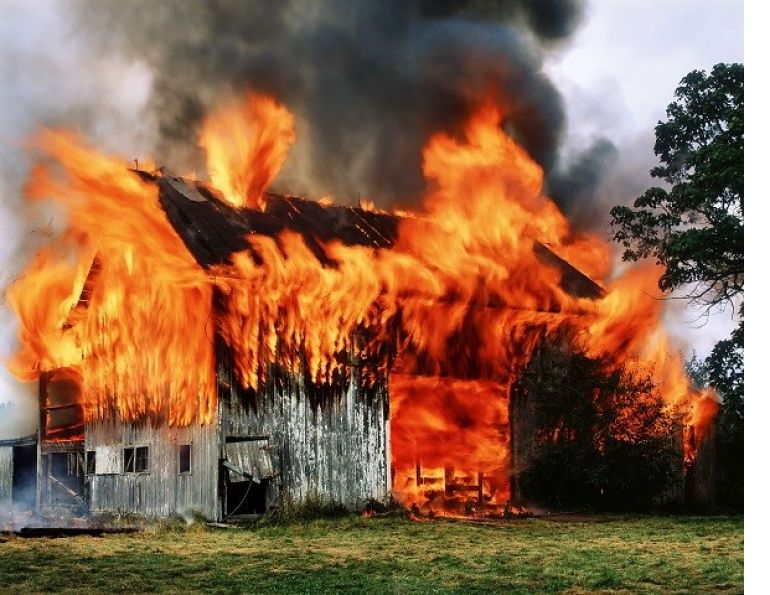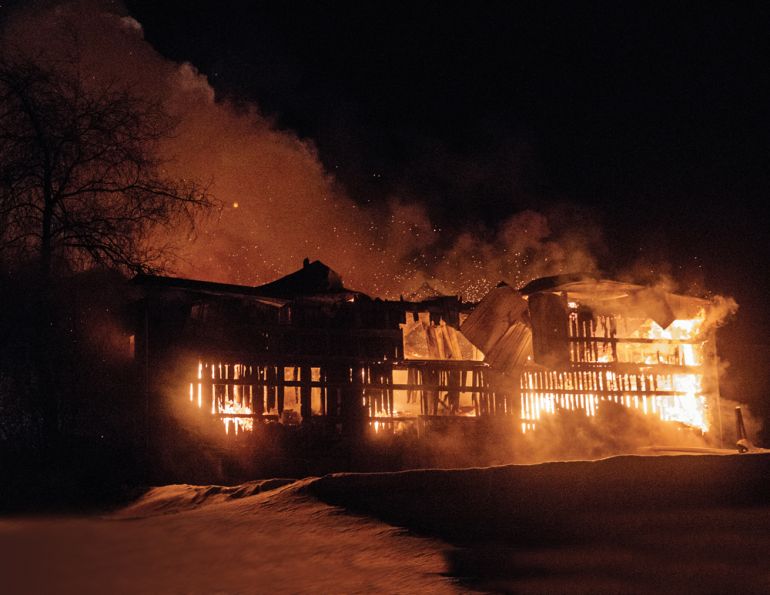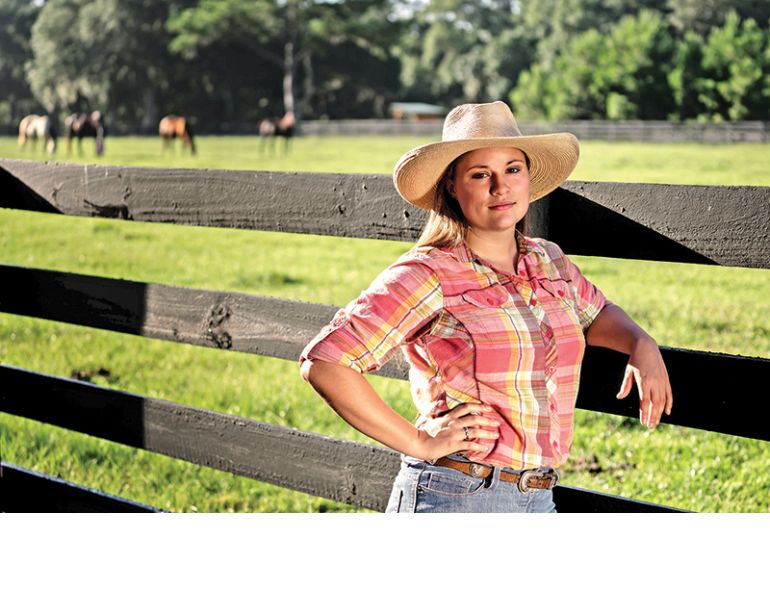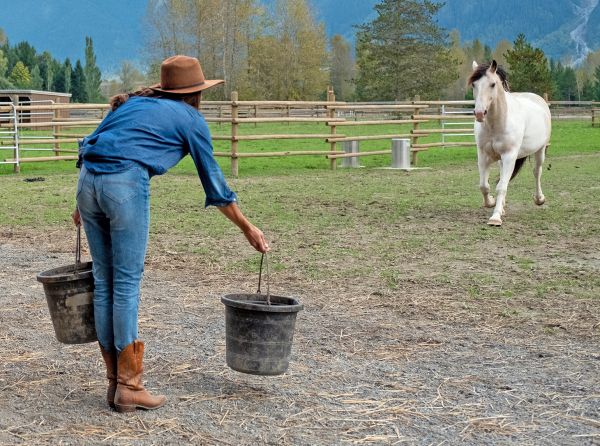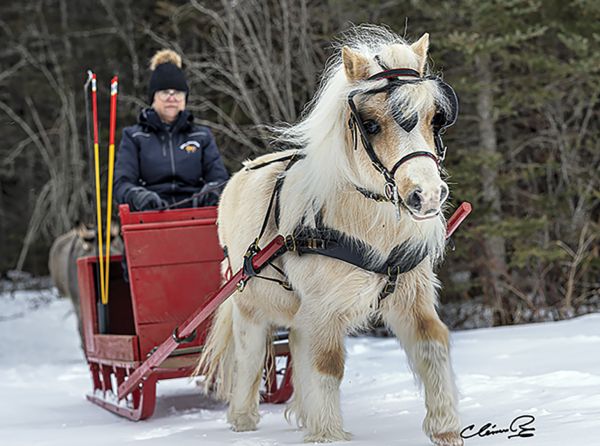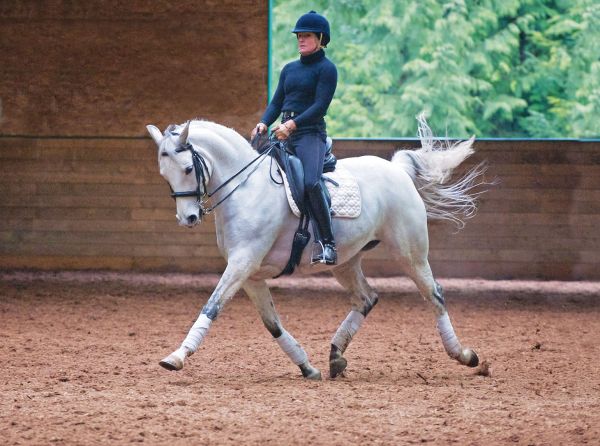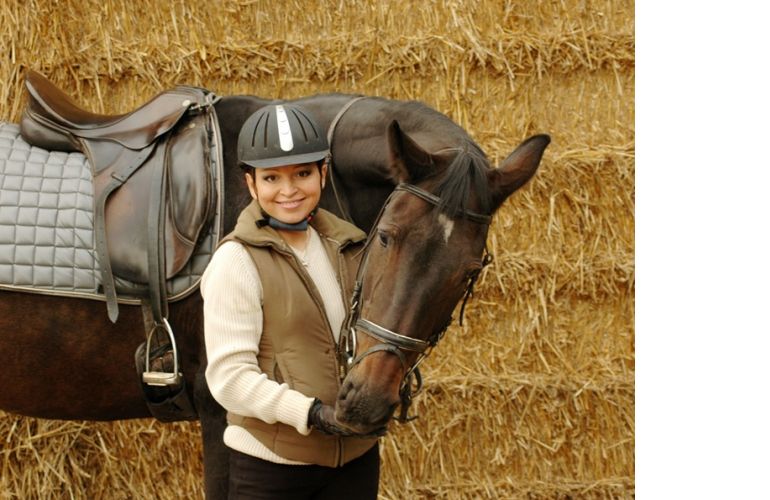The Nightmare of Horse Theft
By Margaret Evans
“Eleven people live on the farm,” says international Grand Prix rider Deborah Stephens, owner with course-designer husband Steve, of Centennial Equestrian Farm in Palmetto, Florida. “[One of them] came to tell me Phedras was missing. The horse was not in his stall. We looked for an hour and a half. There were no skid marks, not markings anywhere, and no other horses missing. I drove around. We have a paddock that’s hardly used and a corner was demolished. I’m thinking, the horse got out, panicked and went through the boards. Then a girl called. She was screaming, ‘He’s cut! He’s cut!’ I ran down thinking he was injured. But never could I have been prepared for what I saw.”
The remains of her newly purchased 12-year-old CSI**** level show jumper Phedras de Blondel lay in a sea of blood. All that was left were his head, neck, and ribcage.

Phedras de Blondel shown in competition with his former rider, Christian Hermon, in 2009. Photo: ©Hippo Foto/Counet Julien
On October 25, 2015, the thieves, believed to be part of a criminal ring marketing illegal horsemeat, had entered the property, walked the horse out with a rope, and led him to the furthest paddock where they slaughtered him. The Stephens had just purchased Phedras and imported him from Germany; he had been out of quarantine for just two days.
“They [investigators] feel it was a Cuban cutting because the butchers were trained in that style of cutting,” says Stephens. “We have a Cuban contingent here and obviously in Miami, which is very Cuban.”
She says that the Latino culture believes horsemeat cures cancer and raises libido. And the criminals wrongly believe that horses coming through quarantine are drug free. They are disease-free as they are tested for dourine, glanders, equine infectious anemia, and equine piroplasmosis. But a horse flying in from Europe may have been given some form of medication before the flight to calm him. Through their own black market links, the criminals could have been aware of Phedras’ travels to his new home.
“We have been trying to put puzzle pieces together,” says Stephens. “Maybe in quarantine, someone mentioned something to a friend or someone was paid off to inform someone else about large, calm horses. The bill of lading is there to see and anyone can read it. Five horses were released that day, two mares, two stallions, and one gelding being Phedras.”
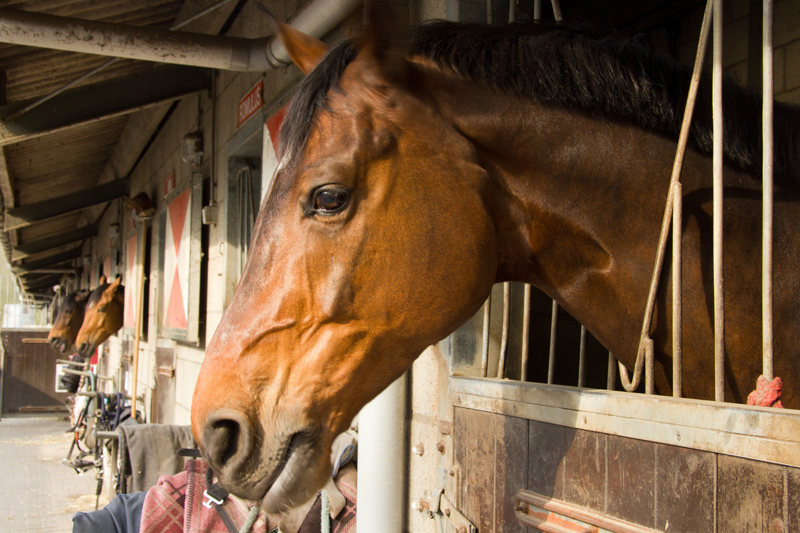
When thieves look at your barn and horses, they look for ways to get your horses or equipment out quickly and quietly. Photo: Canstock/Tetyana
Stephens, an accomplished Grand Prix show jumping rider, says that when Phedras arrived, she unloaded him herself and settled him in his stall. Looking back, she and her husband have theorized that the delivery truck had been followed and that the thieves scoped out their property the night before the gelding was taken. The large, 1,300-pound, gentle horse would have attracted the eye of horse butchers because of his size and ease of handling.
Related: Barn on Fire!
“They didn’t come in the main entrance,” she says. “Fencing is nothing. It keeps horses in but not people out. They likely watched me. They waited the next night and watched the routine. We have surveillance cameras but they likely have night vision goggles. The third night they took him. They put a knife in his ribs and he was bleeding out. They finished him off in the field and filleted him. I walked the path many different times. The horror the horse endured for the last minutes of his life you don’t want to know. These people would kill me as much as anything to not get caught.”
Stephens hired a private investigator who is a retired policeman to look into what happened. She also connected with Richard “Kudo” Couto, chief executive director of the Animal Rescue Mission (ARM). He is responsible for shining a light on illegal animal and horse slaughter farms in south Florida. ARM has become renowned for its accomplishments and undercover work in stopping cruelty and the butchering of animals. The organization was awarded Best Charity of 2015 in Miami following the raid of Coco Farm, an illegal slaughterhouse, when ARM saved over 9,000 animals. ARM is dedicated to ending illegal slaughter, animal sacrifice, beastiality, race horse abuse, and countless other horrors most people couldn’t stomach. It was Couto who informed Stephens that she was dealing with a ruthless ring of organized criminals. But not every raid brings the justice deserved.
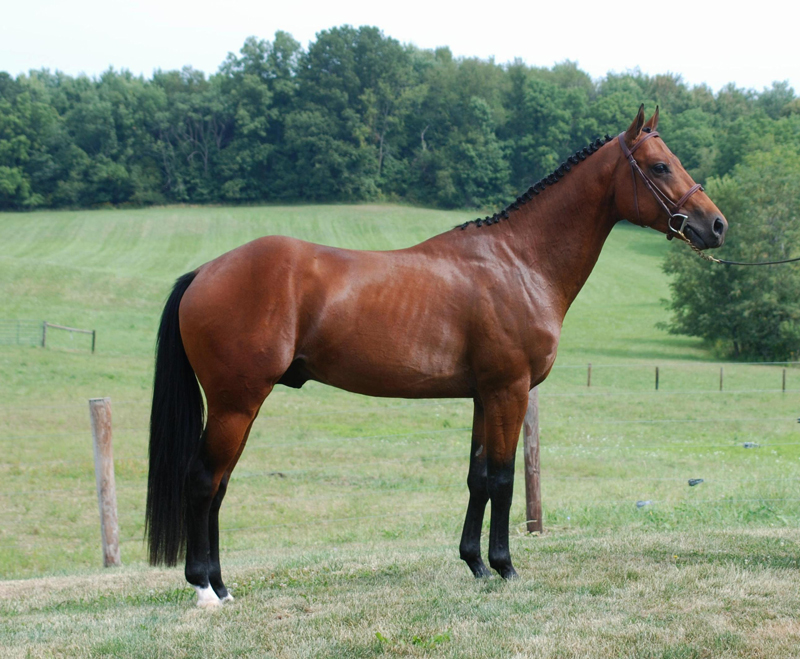
Take photos of your horse from both sides as well as front and back, and at different seasons as horses can look different in winter compared to summer. Make note of any unusual markings such as swirls, white marks, and scars. Store the photos and information in a separate location outside the barn, along with other important documents, so they are easily accessible in case of theft or emergency. Photo: Canstock/K Newman
“Richard Couto went undercover for six months,” she says. “They had all the surveillance, wiretap, video evidence. It was a slam dunk case of killing horses. They went up in front of the judge but the criminals plea-bargained their way out and walked! It wasn’t a big enough crime. Richard is hardened now. I felt so bad. And I don’t want to give up.”
Horse theft is a long, ongoing problem for horse owners, law enforcement officers, investigators, and animal activists everywhere, and it is prevalent in Canada.
“Reports for horse thefts in Alberta are 34 in 2012, 20 in 2013, 46 in 2014 and 20 in 2015,” says RCMP Cpl. Christian Reister with Livestock Investigations. “The theft numbers show relative consistency with the exception of 2014 for unknown reasons. Like any theft, the motivation is usually monetary in nature. However, a livestock thief usually has to have livestock experience [and] a means to transport and maintain the livestock prior to selling. This differs from other thieves who steal cars, tools, or personal property. For nearly all horses recovered by police and livestock inspectors, the thief has a close association to the rightful owner such as an employee, business partner, or someone attempting to recover an outstanding debt [which is verified through the] Livestock Identification Services, the brand department for the Province of Alberta. I am not sure of the rate of recovery; however, we do recover stolen horses.”
Recovery, though, can sometimes take an agonizingly long time.
On September 26, 1997, Harold and Debi Metcalfe, horse owners in Shelby, North Carolina, discovered that their spotted racking horse, Idaho, had disappeared from her pasture. The fence bordering the road had been cut. Back then, the Internet was still in its infancy, but Metcalfe taught herself how to capture the power of email and get information out about their missing horse. But she and her husband had no idea that the journey to recover Idaho would take 51 long weeks. Through it all, fear, trauma, and nightmares tormented them as the potential horror of the slaughter of Idaho for horsemeat haunted them.
Related: Wildfire! Flood! Earthquake!
“I have a real hard time with it [slaughter for horsemeat] as my horse was stolen and she was gone for 51 weeks,” says Metcalfe. “We didn’t even know about slaughter until a month into the search. It was worse than a nightmare. And even after we found her and everything was okay we were told that she went to slaughter [but was saved] more than once. Then you have this horse that you’ve had for nine years and you picture her going through all these horrible things that I couldn’t even look at. When we got her back we thought we’re fine. But we’ve found out even now we’re not fine. There are the slaughter issues. I personally don’t want to know about it, don’t want to hear about it as I can’t handle it. It’s just left too many scars for us.”
At the outset of their search, Metcalfe realized there was no structured, centralized resource for victims of horse theft. Her strategy was to send out as many email flyers as possible to reach horse dealers, auction houses, and law enforcement officers. She knew in her heart it would take prayers and luck. Then, one day, her flyer landed in the right place at the right time. Finally on September 17, 1998, she received the call that would bring Idaho home.
But in the joy of finally recovering their horse, Metcalfe knew that a new mission had started. In the year’s relentless search, Metcalfe had built a following of friends, strangers, horse owners, and others who had been victims of theft. To help them through networking, she set up Stolen Horse International, its website www.netposse.com.
“We see all kinds of things,” she says. “Theft hasn’t gone down, but what has happened is that people are more aware of it now even though some deny it happens. I had a woman argue with me that it doesn’t happen. Then she told me where she was from and I pulled up her state (Texas). She was shocked. We have a problem in Texas where a lot of horses have disappeared. I had one from Canada, too. She swore up and down that it doesn’t happen in Canada, but it does.”
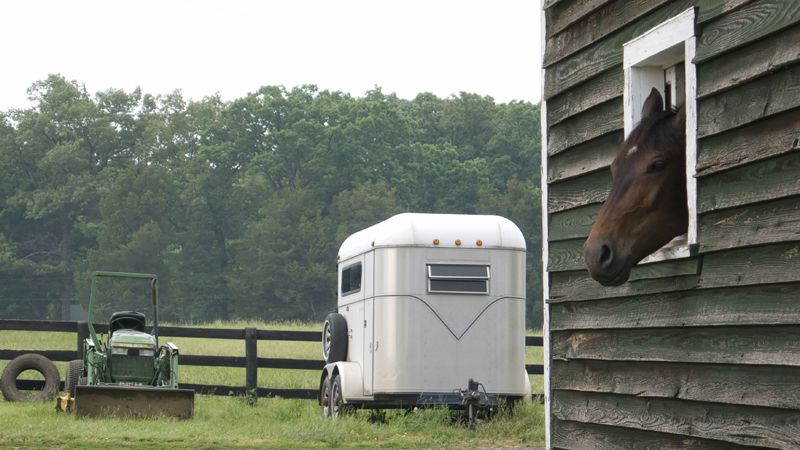
Your horse trailer should be some distance from the barn, with wheels locked. A bold thief will steal your trailer and use it to steal your horse. Photo: iStock/Cameron Whitman
The problem is that most people don’t want to think about their horse disappearing. It’s a problem that is ignored and, for the most part, Metcalfe might too have thought that way before Idaho disappeared.
Horses are an easy source of cash. They can be sold at sales and auctions, go for slaughter, or to a private buyer. They can be taken as a result of bad leases, disputes, or ugly divorces. The more times a horse is re-sold, the harder it is to find. For thieves, a horse is quick turnover cash and they don’t care where the animal ends up.
Metcalfe vowed that no other victim would have to face such a traumatic experience alone the way she and her husband did. Now, with Stolen Horse International, the speed and networking power of the Internet helps to spread the word about stolen horses everywhere. There is no membership list or dues. Anyone is able to join by visiting the website and posting information about missing horses. Today, Debi receives hundreds of emails daily and travels to speaking engagements to educate horse people about theft prevention and recovery strategies. Through her efforts and the volunteer network, not only have many horses and their owners been reunited, but many more thefts have been prevented.
“We have even had horses brought back,” she says of NetPosse’s success. “If we can get the horse’s information on the first day, within 24 hours, and issue press releases, we are seeing a high rate of return. But if they [owners] come to us three weeks later and they’ve done all they can do, we can still send out alerts and we have results but it’s not as high.”
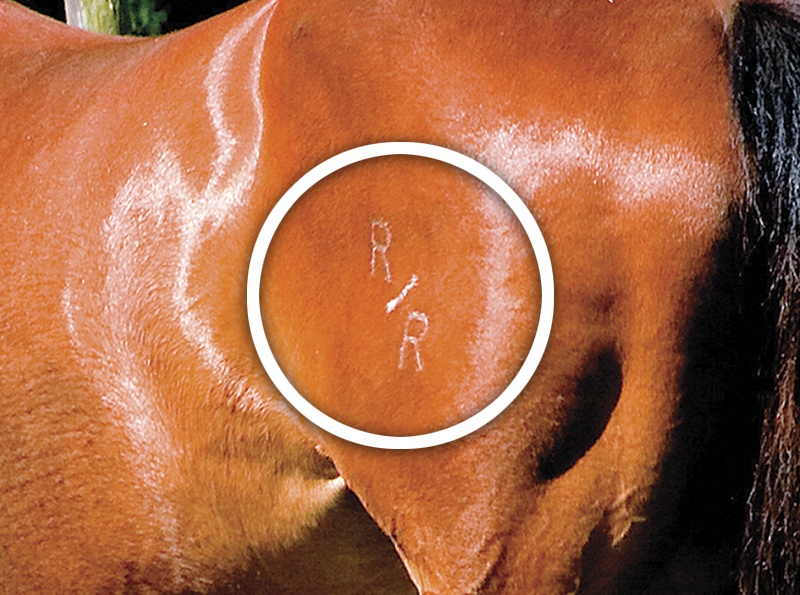
Chances of recovery are much improved if your horse is branded. According to an RCMP Livestock Investigator, there have been occasions where a stolen horse was dropped off on the side of the road and left behind when the thief realized the horse was branded. Photo: Shutterstock/Cheryl Kunde
Metcalfe’s focus is to help people protect their horses and help with their search and recovery.
“There were five that we saved in September that were all slaughter-bound for Canada, and we reached them in time before they left the US. And that was five horses stolen from one person. We do the best we can and we knew who they went with. We got four of them within a couple of days. The last one was actually processed in the USDA system and [we got it] within an hour of stepping on the truck to go. I don’t have an answer to solve it. Horse theft is never going to stop.”
Related: 18 Ways to Improve Security on Your Horse Farm
Metcalfe says that when she got the report about Phedras, she had a sinking feeling about it. “There are local laws in Florida. There’s a Latino culture for horsemeat and a black market for it. It’s a really hard subject and we stay in the middle of the fence on it.”
And that is why proactive protection is so important to prevent theft.
“We beefed up security,” says Stephens. “We have four quadrants. In the long barn isles on the stalls there are laser beams and any person who goes to the stall or touches it sets off a huge alarm. Four people are called, all the lights go on, bars close off, and you can’t use a bolt cutter to cut locks. The police, choppers, are called.”
In addition to hiring a private investigator, the family has set up a $35,000 reward with Crime Stoppers. But many horse owners have a simple barn, fenced pasture, and gates that may or may not be padlocked.

Beware the escape artist. When you first discover your horse missing, remain calm and consider that he may have gotten out of his enclosure. Look for physical signs such as a downed fence, an open gate, search the area, and contact your neighbours as people commonly put a stray horse into an enclosure until they can determine who the owner is. Photo: Canstockphoto/Virgonira
According to Reister, only the auction markets in British Columbia, Alberta, and Saskatchewan provide brand inspection services to identify stolen horses. Manitoba and provinces east do not. However, there are a number of options to help you improve security (see 18 Ways to Improve Security on Your Horse Farm) but Reister says, “The best thing horse owners can do to prevent theft is to ensure your horses are checked on a regular basis, especially when they are kept in an isolated pasture. Keep your gates secure and locked and have your neighbours keep a close watch on your property and livestock while you are away. If there is evidence of someone trespassing on your property or pasture then this should prompt one to check their livestock and get an accurate count. Prompt reporting to police and the local brand department will increase the chance of recovery and collection of evidence such as tire impressions, fingerprints, video surveillance, and neighbourhood inquiries.”
In this article, Stolen Horse Nightmare, former RCMP Livestock Investigator Cpl. Ed Turco provided advice on immediate action if you think your horse has been stolen. First, look for physical signs such as an open gate, downed fence, hoof prints, boot prints, or strange tire tracks. Look for anything that may have dropped or been left behind such as tools or clothing. In one theft, a wallet was left behind. Check with the local RCMP to let them know you’ve lost your horse, and check to see if anyone has reported capturing a stray horse. If your horse was branded, let brand inspectors know. Brands are red flags at public auctions, feed lots, packing plants or if the horse is exported out of the province.
Create a poster with contact details, location, and a photo of your horse and email it to horse associations, tack stores, auction markets, and all horse related businesses including horse magazines. Get it onto your Facebook page, LinkedIn, Twitter, and website. When “Miles” was stolen last year from a farm west of Ottawa, his owner created a Facebook post with his details. It went viral and Miles was found a few days later. Two people were charged with his theft. Remember, Crime Stoppers is for horse people too.
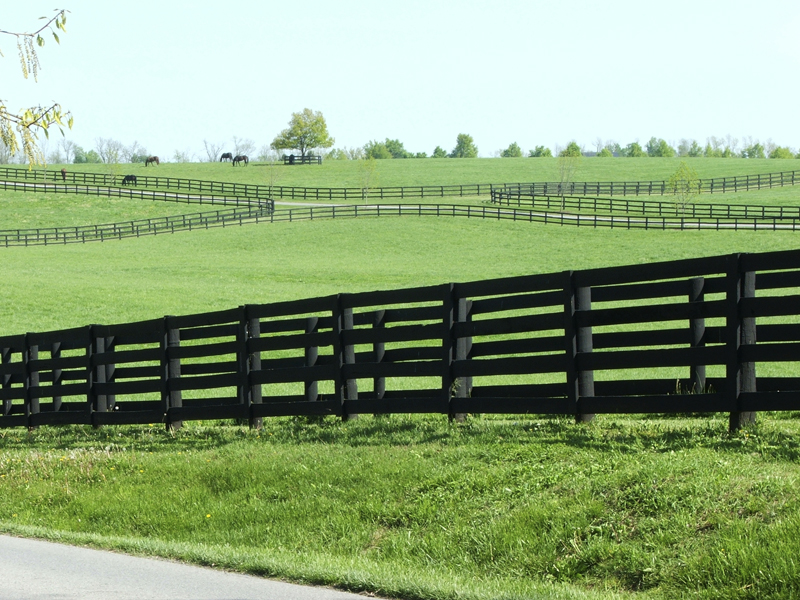
A combination double fence and perimeter fence should be used where human contact with horses is discouraged, such as along public roads. The perimeter fence will keep a loose horse in, and keep unwanted visitors away from direct horse contact. Photo: iStock/Andy Irick
The disappearance of a horse, especially if the outcome is tragic or feared to be so, can have devastating consequences. And people’s reactions can be really unique.
“It was like people who have died and they see the light,” says Stephens quietly after a momentary pause as she recalls her initial shock when she saw the horrific slaughter scene of Phedras. She became very calm.
“My heartbeat slowed down. I knew exactly in that moment to never let this happen again to another horse. We did the necropsies, prints, it was a crime scene. Everyone who sees you is trying to be nice. But it’s like that calm feeling never went away and I put all my energy into that first statement. It’s hard.
“I’m a psychology major, I have to be strong to help other horses and people. I’m going to do something for the SPCA, which I’m happy about. I’ve been asked to speak. I think all things come to you. Everything bad that has ever happened to me I have turned into something positive. You go through so much because you love the horse. You see some horrible things with horses and you have to do the best you can to learn from it and help others.
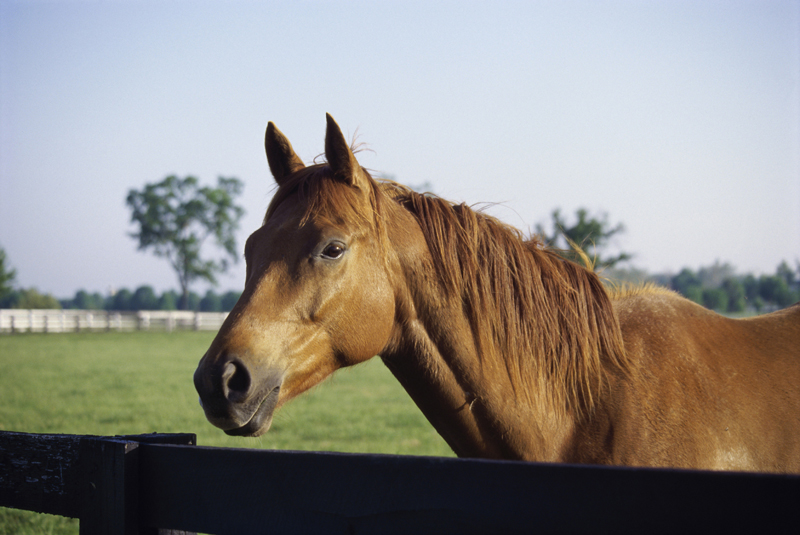
Is your horse spending more time than usual at a particular place by the fence? Be aware that someone may be feeding him with the intention of gaining his confidence and then luring him away. Thinkstock/Purestock
“Now, I see things differently though. When you look at your barn, you see horses. Thieves look at it and see exit strategies. But something helped me. I’m not religious. It was just the weirdest feeling. This is what I have to do and take charge. I have to find them. I have to stop it ever happening again. My mission statement is to help others so this doesn’t happen to them.”
Main article photo: © Hippo Foto/Counet Julien. The grand prix show jumper, Phedras de Blondel, was newly-purchased by Debbie Stephens of Centennial Farm in Palmetto, Florida, and imported from German. The 12-year-old Selle Français gelding was just two days out of quarantine when he was found butchered in a remote pasture on the farm. It is speculated that the horse was targeted because of his size and gentle nature, and professionally butchered for meat to be sold on the black market.




